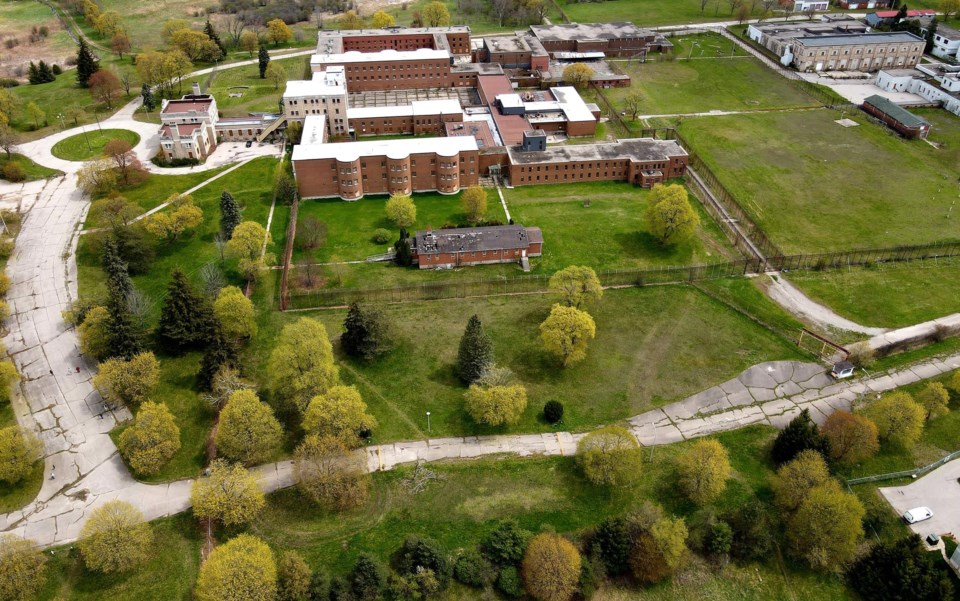The last time the old Guelph reformatory was in the news, it was for reasons definitely not related to development or its heritage status.
It was just last month that the old jail building there doubled for the infamous (and fictional) Arkham Asylum, home to the most dastardly of Batman villains, and apparently a prime setting for the third season of Netflix’s superhero show Titans.
But as we’ve explored in previous editions of this column, Guelph is more like another Batman villain when it comes to planning matters. Two-faced, you might say.
On the one hand we think that nothing should ever change here and that everything’s perfect the way it is, but at the same time we’re being forced to accept the fact that Guelph is quickly growing into a modern city of 200,000 plus people.
This dichotomy will be on display again with the future fate of the old reformatory lands being, at least, partially decided at this Monday’s planning meeting of city council.
A virtual town hall organized by a group called the Coalition to Protect OR Lands seemed to set the stage for a fight that will likely run into the early hours of Tuesday morning: Is it enough to preserve a portion of the heritage property, or does the whole thing demand to be saved?
Put a pin in that question because this debate is another test of the fractious relationship between city staff and Heritage Guelph.
When the staff proposal came to the committee in April, the members of Heritage Guelph unanimously rejected the plan to use a part IV heritage designation to protect eight select sites on the property, and instead moved for a part V designation to make the reformatory property a heritage district. Staff tried to split the proverbial baby by designating some and listing the rest, but Heritage Guelph didn’t bite.
As with the case of the Cultural Heritage Action Plan early this year, council is going to be caught in the middle between staff pragmatism and Heritage Guelph enthusiasm.
Add to this an extra layer of complication. Guelph doesn’t own the reformatory lands, the province does.
Granted, the Government of Ontario has been fairly good about following the city’s well-thought-out designs for the property and the Guelph Innovation District Secondary Plan, but given the current occupancy of Queens Park, would it be surprising if they just ignored any pretense about community wishes and just sold the land to the highest bidder?
The answer is no, but I’ve got to tell you that it would be equally surprising if, after all this time, everyone with a stake in creating the Guelph Innovation District just said, “forget about it,” as what seems to be the endgame envisioned by the coalition. They want to keep the lands as they presently are.
This debate is gong to be contentious, and that’s why we need all the facts to be carefully laid out.
In writing this opinion piece, I tried to review the materials for the Guelph Innovation District and if you think that there’s some kind of summery document you can read and get the basic gist of the plan, you would be wrong. The GID page on the city’s website is loaded with technical material that tells you nothing about what the eventual finished project is supposed to look like.
Adding insult to injury, there’s a two-minute YouTube video there that I thought would be the “too long; didn’t read” version of the plan, but it was about as insightful as the trailer for a Christopher Nolan movie; it looks nice, but I have no idea what it’s supposed to be about.
This is a trend in Guelph, and it was reflected at this week’s committee of the whole meeting too.
The presentation of the Trails Master Plan prompted a motion from Ward 4 Councillor Christine Billings to prioritize a proposed trail to run along the Speed River from the skatepark to the water treatment plant. Why? Billings’ wardmate Mike Salisbury ran down the complicated history of trying to get trail equity in the west end, a journey that goes back nearly 20 years.
A lot of people in Guelph are heavily invested in the long-term development of their neighbourhoods, and consequently carry a lot of institutional knowledge. The rest of us though are often struggling to catch up, and a substantive issue that deserves the full attention of a fully informed and engaged electorate looks like just another slap fight between local elites and professional staff because it’s so hard to get a handle on what the fight is supposed to be about.
So you like heritage? Great, tell me exactly what you would like the city to do with the land if all the work already done on the secondary plan is insufficient.
To the city: you’ve got a problem. How did you and Heritage get so far off the same page and why not back their vision for the property?
If we’re going into a long night on Monday, let’s use that time productively by talking about the path to the future, instead of enumerating about the past. Time, as you may know, only goes in the one direction.
